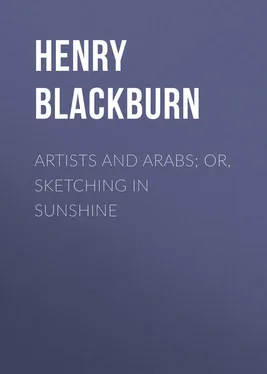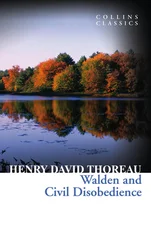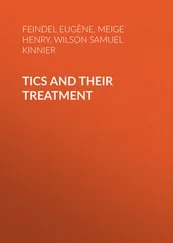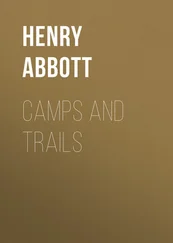Henry Blackburn - Artists and Arabs; Or, Sketching in Sunshine
Здесь есть возможность читать онлайн «Henry Blackburn - Artists and Arabs; Or, Sketching in Sunshine» — ознакомительный отрывок электронной книги совершенно бесплатно, а после прочтения отрывка купить полную версию. В некоторых случаях можно слушать аудио, скачать через торрент в формате fb2 и присутствует краткое содержание. Жанр: foreign_antique, foreign_prose, на английском языке. Описание произведения, (предисловие) а так же отзывы посетителей доступны на портале библиотеки ЛибКат.
- Название:Artists and Arabs; Or, Sketching in Sunshine
- Автор:
- Жанр:
- Год:неизвестен
- ISBN:нет данных
- Рейтинг книги:3 / 5. Голосов: 1
-
Избранное:Добавить в избранное
- Отзывы:
-
Ваша оценка:
- 60
- 1
- 2
- 3
- 4
- 5
Artists and Arabs; Or, Sketching in Sunshine: краткое содержание, описание и аннотация
Предлагаем к чтению аннотацию, описание, краткое содержание или предисловие (зависит от того, что написал сам автор книги «Artists and Arabs; Or, Sketching in Sunshine»). Если вы не нашли необходимую информацию о книге — напишите в комментариях, мы постараемся отыскать её.
Artists and Arabs; Or, Sketching in Sunshine — читать онлайн ознакомительный отрывок
Ниже представлен текст книги, разбитый по страницам. Система сохранения места последней прочитанной страницы, позволяет с удобством читать онлайн бесплатно книгу «Artists and Arabs; Or, Sketching in Sunshine», без необходимости каждый раз заново искать на чём Вы остановились. Поставьте закладку, и сможете в любой момент перейти на страницу, на которой закончили чтение.
Интервал:
Закладка:
They are generally fair and slight of figure, with false effeminate faces, closely-shaven heads covered with fez and turban, loose baggy trousers, jacket and vest of blue or crimson cloth, embroidered with gold; round their waists are rich silken sashes, and their fingers are covered with a profusion of rings. Their legs are often bare and their feet are enclosed in the usual Turkish slipper.
This is the prominent town type of Moor or Jew, the latter to be distinguished by wearing dark trousers, clean white stockings, French shoes, and a round cloth cap of European pattern. There are various grades, both of the Moors and Jews, some of course shabby and dirty enough; but the most dignified and picturesque figures are the tall dark Arabs and the Kabyles, with their flowing white bournouses, their turbans of camel's hair, and their independent noble bearing. Here we see them walking side by side with their conquerors in full military uniform and their conquerors' wives in the uniform of Le Follet , whilst white-robed female figures flit about closely veiled, and Marabouts (the Mahom-medan priests) also promenade in their flowing robes. Arab women and children lounge about selling fruit or begging furtively, and others hurry to and fro carrying burdens; and everywhere and ever present in this motley throng, the black frock-coat and chimney-pot hat assert themselves, to remind us of what we might otherwise soon be forgetting, – that we are but four days' journey from England.
There is noise enough altogether on the Place to bewilder any stranger; for besides the talking and singing, and the cries of vendors of fruit and wares, there is considerable traffic. Close to us as we sit under the trees, (so close as almost to upset the little tables in front of the cafés), without any warning, a huge diligence will come lunging on to the Place groaning under a pile of merchandise, with a bevy of Arabs on the roof, and a party of Moorish women in the 'rotonde'; presently there passes a company of Zouaves at quick step, looking hot and dusty enough, marching to their terrible tattoo; and next, by way of contrast again, come two Arab women with their children, mounted on camels, the beasts looking overworked and sulky; they edge their way through the crowd with the greatest nonchalance, and with an impatient croaking sound go shambling past.
The 'Place Royale' faces the north, and is enclosed on three sides with modern French houses with arcades and shops, and when we have time to examine their contents, we shall find them also principally French. Next door to a bonnet-shop there is certainly the name of Mustapha over the door, and in the window are pipes, coral, and filagree work exposed for sale; but most of the goods come from France. Next door again is a French café, where Arabs, who can afford it, delight in being waited upon by their conquerors with white aprons and neck-ties.
The background of all this is superb: a calm sunlit sea, white sails glittering and flashing, and far to the eastward a noble bay, with the Kabyle mountains stretching out their arms towards the north.
At four o'clock the band plays on the Place , and as we sit and watch the groups of Arabs and Moors listening attentively to the overture to 'William Tell,' or admiringly examining the gay uniforms and medals of the Chasseurs d'Afrique – as we see the children of both nations at high romps together – as the sweet sea-breeze that fans us so gently, bears into the newly constructed harbour together, a corvette of the Imperial Marine and a suspicious-looking raking craft with latteen sails – as Marochetti's equestrian statue of the Duke of Orleans, and a mosque, stand side by side before us – we have Algiers presented to us in the easiest way imaginable, and (without going through the ordeal of studying its history or statistics) obtain some idea of the general aspect of the place and of the people, and of the relative position of conquerors and conquered.
As our business is principally with the Moorish, or picturesque side of things, let us first look at the great Mosque which we glanced at as we entered the harbour, and part of which we have sketched for the reader.
Built close to the water's edge, so close that the Mediterranean waves are sapping its foundations – with plain white shining walls, nearly destitute of exterior ornament, it is perhaps 'the most perfect example of strength and beauty, and of fitness and grace of line, that we shall see in any building of this type. 3 3 This beautiful architectural feature of the town has not escaped the civilizing hand of the Frank; the last time we visited Algiers we found the oval window in the tower gone, and in its place an illuminated French clock!
It is thoroughly Moorish in style, although built by a Christian, if we may believe the story, of which there are several versions; how the Moors in old days took captive a Christian architect, and promised him his liberty on condition of his building them a mosque; how he, true to his own creed, dexterously introduced into the ground plan the form of a cross; and how the Moors, true also to their promise, gave him his liberty indeed, but at the cannon's mouth through a window, seaward.
The general outline of these mosques is familiar to most readers, the square white walls pierced at intervals with quaint-shaped little windows, the flat cupola or dome, and the square tower often standing apart from the rest of the structure as in the little vignette on our title-page, like an Italian campanile. Some of these towers are richly decorated with arabesque ornamentation,' and glitter in the sun with colour and gilding, but the majority of the mosques are as plain and simple in design as shown in our large sketch.
Here, if we take off our shoes, we may enter and hear the Koran read, and we may kneel down to pray with Arabs and Moors; religious tolerance is equally exercised by both creeds. Altogether the Mahommedan places of worship seem by far the most prominent, and although there is a Roman Catholic church and buildings held by other denominations of Christians, there is none of that predominant proselytizing aspect which we might have expected after thirty years' occupation by the French! At Tetuan, for instance, where the proportion of Christians to Mahommedans is certainly smaller, the 'Catholic church' rears its head much more conspicuously.
In Algiers the priestly element is undoubtedly active, and Soeurs de Charité are to be seen everywhere, but the buildings that first strike the eye are not churches but mosques; the sounds that become more familiar to the ear than peals of bells, are the Muezzin's morning and evening salutation from the tower of a mosque, calling upon all true believers to —
'Come to prayers, come to prayers,
It is better to pray than to sleep.'
The principal streets in Algiers lead east and west from the Place to the principal gates, the Bab-Azoun and the Bab-el-Oued. They are for the most part French, with arcades like the Rue de Rivoli in Paris; many of the houses are lofty and built in the style perhaps best known as the 'Haussman.' Nearly all the upper town is still Moorish, and is approached by narrow streets or lanes, – steep, slippery, and tortuous, 4 4 It may be interesting to artists to learn that in this present year 1868, most of the quaint old Moorish streets and buildings are intact – neither disturbed by earthquakes nor 'improved' out of sight.
which we shall examine by-and-bye.
The names of some of the streets are curious, and suggestive of change. Thus we see the 'Rue Royale,' the 'Rue Impériale there is, or was until lately, a 'Place Nationale,' and one street is still boldly proclaimed to be the 'Rue dé la Révolution'!
In passing through the French quarter, through the new wide streets, squares and inevitable boulevards, the number of shops for fancy goods and Parisian wares, especially those of hairdressers and modistes, seems rather extraordinary; remembering that the entire European population of Algeria, agricultural as well as urban, is not much more than that of Brighton. In a few shops there are tickets displayed in different languages, but linguists are rare, and where there are announcements of the labels have generally a perplexing, composite character, like the inscription on a statue at the Paris Exhibition of 1867, which ran thus 'Miss Ofelia dans Amlet.'
Читать дальшеИнтервал:
Закладка:
Похожие книги на «Artists and Arabs; Or, Sketching in Sunshine»
Представляем Вашему вниманию похожие книги на «Artists and Arabs; Or, Sketching in Sunshine» списком для выбора. Мы отобрали схожую по названию и смыслу литературу в надежде предоставить читателям больше вариантов отыскать новые, интересные, ещё непрочитанные произведения.
Обсуждение, отзывы о книге «Artists and Arabs; Or, Sketching in Sunshine» и просто собственные мнения читателей. Оставьте ваши комментарии, напишите, что Вы думаете о произведении, его смысле или главных героях. Укажите что конкретно понравилось, а что нет, и почему Вы так считаете.












